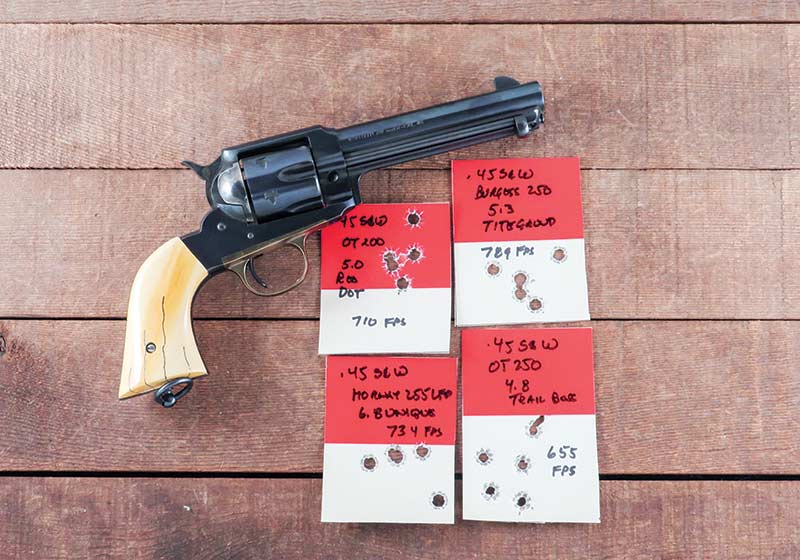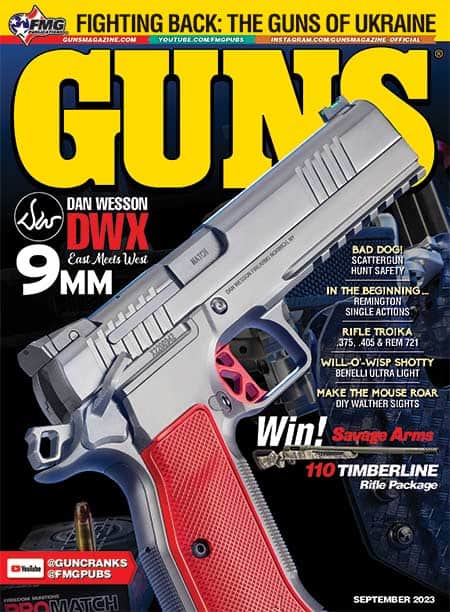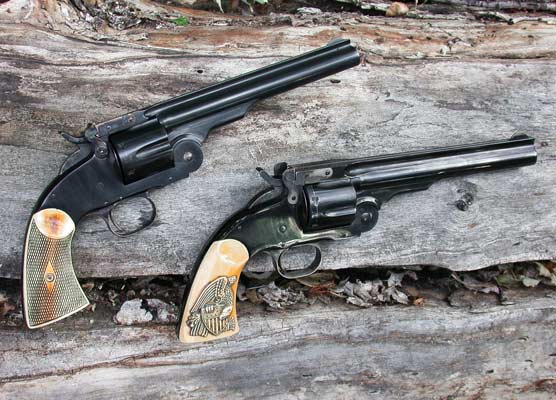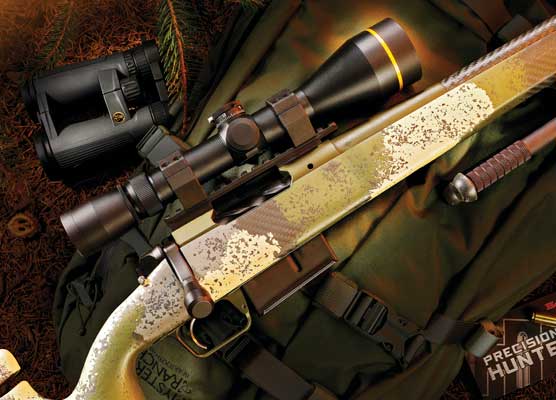Remington Part IV
Single Action Sixguns
Colt or Remington? In the Civil War era, the Remington percussion sixgun was available both as an 8″ .44 New Model Army and a 7 ½” .36 Navy Model. Percussion Colts were more readily available and in a greater profusion of models but the Remington cap-n-ball sixgun had several advantages over the Colt. The frame of the Remington was solid with the barrel permanently screwed into the frame. Meanwhile, the Colt sixguns were all open-topped with removable barrels held in place by two small pins at the bottom of the front of the frame and a wedge pin entering the barrel assembly from the side.
More Advantages
The Remington also had a better sighting arrangement with a “hog wallow” rear sight through the top of the frame mated up with an easy-to-see front sight. The Colt carried a brass front sight while the rear sight was a difficult-to-see notch in the cocked hammer.
The Colt did have two great advantages. Most pistoleros found it to be quicker from leather and slightly faster to handle with its easier-to-reach hammer and more comfortable grip. It also would shoot longer without jamming from fouling. However, Remington had a hammer with a solid face striking the percussion caps while the Colt had a notch that was more prone to suck fired caps off the nipple and cause a cap jam.
When I first started visiting gun shops and my first gun show in 1956, I found it was very easy to find Colt single actions, both the 1873 Peacemaker as well as various cap-n-ball sixguns, but I rarely saw any Smith & Wesson or Remington single actions. Perhaps they were there and just perhaps my eyes had been trained by who knows how many B westerns to always see Colt above all else.
advantages of the Colt single action was not only the fact they were made for a longer period of time, 1873-1941 compared to the Remington from 1874-1896, but the Colt also won the numbers game with more than 350,000 compared to about 30,000 Remington revolvers. The Colt guns were also chambered in popular cartridges such as .45 Colt, .44-40 and .38-40 while the Remington models were not only in a much smaller supply, many were chambered in the obsolete .44 Remington.
My first encounter with a Remington of any kind was a replica 1858 percussion Remington revolver by Navy arms. It didn’t take long to realize how comfortable the Colt Single Action Army grip frame makes the shooting of standard .44s and .45s, nor to notice the cramped (for my hand) grip frame on the Remington 1858 was not nearly as comfortable. Over the years I have added several Remington 1875 replicas to my collection but they also have not seemed to feel as good in the hand as my Colts.
From the very beginning, when compared to the Colt, Remington was an inherently stronger design. Where Colt used three parts — mainframe, backstrap and trigger guard — bolted together, Remington forged a one-piece steel housing incorporating the mainframe and grip frame with no screws to loosen while shooting.
Unlike the open-top design of Sam Colt’s percussion revolvers, the early Remington models had a solid top strap, which the United States Military insisted upon Colt using in their Single Action Army. It is quite obvious to me someone at Colt took a good look at the Remington percussion revolvers before the Colt 1871-72 Open-Top evolved into the Single Action Army in 1873. It is also obvious Remington engineers then looked back at the Colt of 1873 before the first Remington cartridge-firing revolvers arrived in 1874.
When one compares the percussion revolvers from Remington and Colt, we find them to be quite different. They are quite different as to look, feel and operation. However, when we come to the Colt Model of 1873 and the Remington Model 1875, we find them to be quite similar in appearance except for the web found under the barrel of the Remington. In fact, when Hollywood wanted the sixgun used in the movie to be a Remington, they simply added a pot metal Remington web under the barrel of the Colt. If one looks at close-up pictures of Westerns using Remington guns, it is easy to see how crudely these webs are attached to Colt single action movie guns.
Was the purpose of the web simply to give a distinctive appearance? Was it there just to carry on the look of the .44 Remington percussion revolvers? Was it designed as an aid for easy holstering? Did the Remington engineers think it provided extra strength? Whatever the reason, it is the one distinctive appearance factor of the Remington 1875 when compared to the Colt Peacemaker.
Somewhere between 2,000 and 4,000 Remington Model 1875s were produced over the next three years with a blade front sight, mostly without the lanyard ring and chambered in .44-40 and .45 Colt. Some minor changes were made in 1881 with between 4,000 and 5,000 being manufactured before the Model 1890 arrived. The last few, less than 1,000, were chambered in .44-40 with 5 ¾” barrels. In 1883, approximately 1,000 nickel-plated Model 1875s were purchased by the U.S. Government to arm the Indian Police.
E. Remington & Sons suffered a bankruptcy in 1888, the company name was changed to Remington Arms and a few “Model 1888” single actions were produced before the arrival of the Model 1890. The last of the Remington big-bore single actions were produced in .44-40 with less than 2,000 being manufactured before production ceased in 1896. Both barrel lengths were offered in the Model 1890, which is easily distinguished from the Model 1875 by the lack of the full-length web under the barrel.
In all of this time I have never had the privilege of shooting an original Remington. My friend and former editor, Jeff John, has this to say about the original Remington Model 1875: “Handling the 1875 is an odd experience. While it is roughly the same weight as the Colt SAA, the grip angle is awkward and the balance feels off. I found few who admire its handling characteristics, and I’m not sure I believe the few I’ve met.”
Thanks to Hartford Armory, the original Remington in both 1875 and 1890 iterations came back and I have not only been privileged to shoot these new sixguns but also to handle the original Remington 1875 used as their pattern. Unfortunately, as we will see in the next installment, the Hartford Armory Remington did not last very long.









